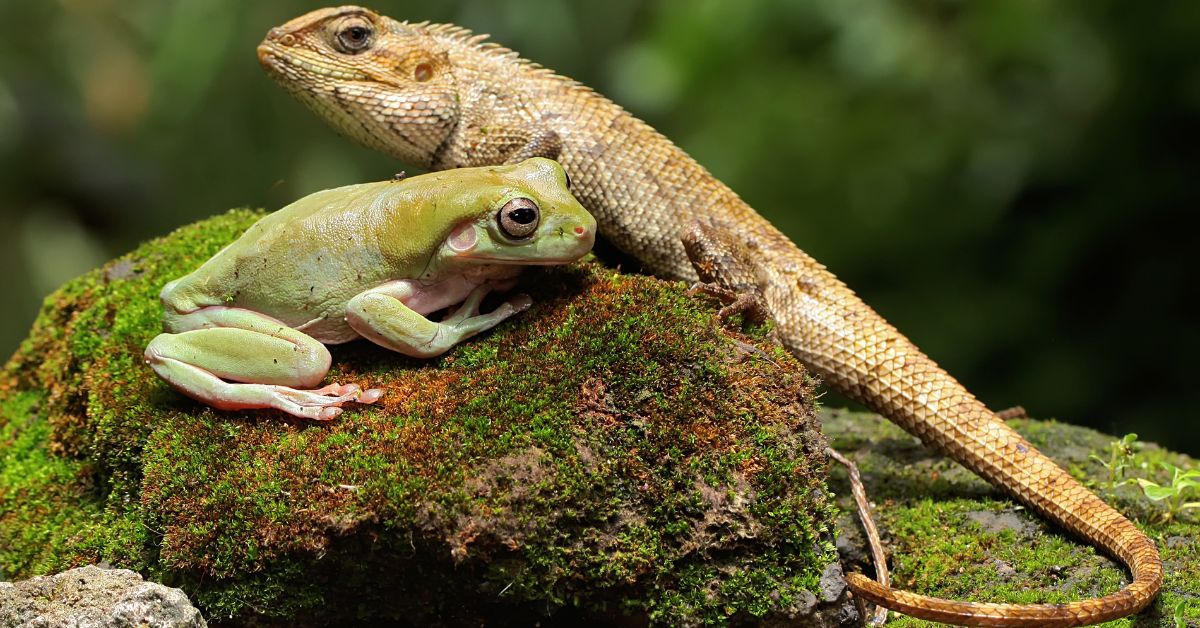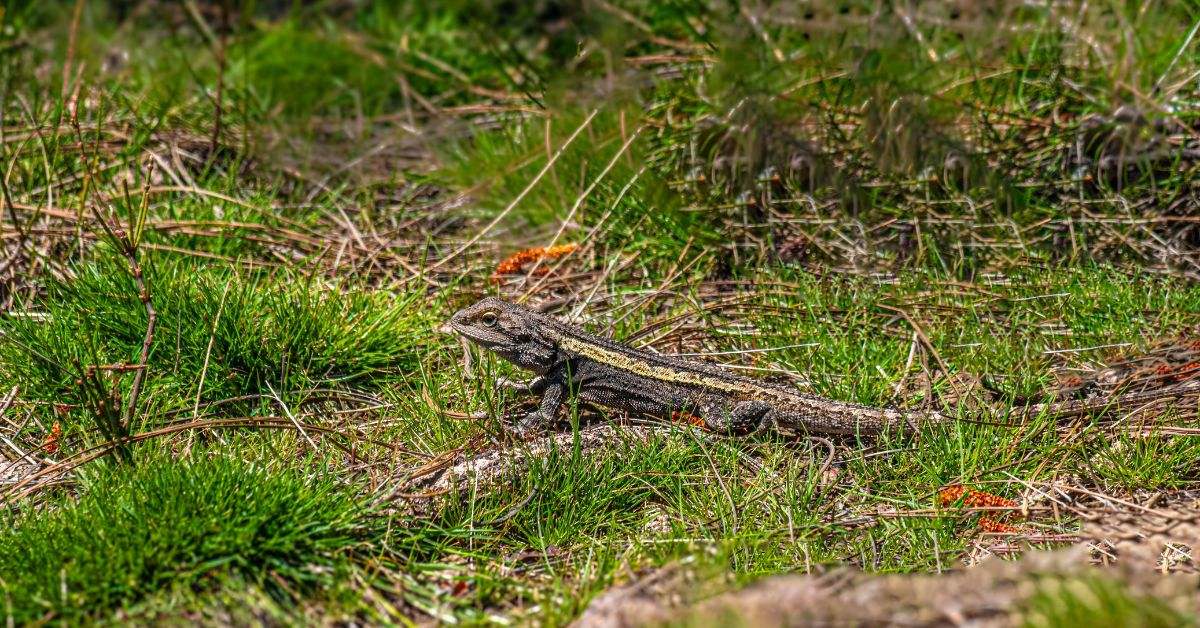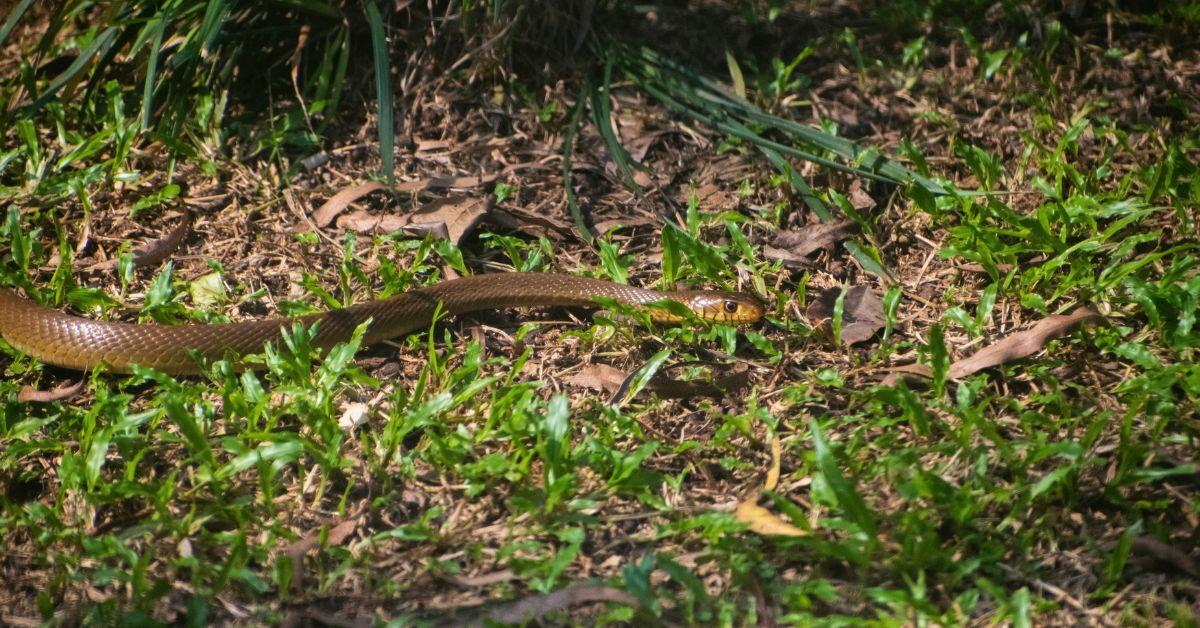How to Keep Reptiles Out of Your Garden During the Monsoon?
Featured image courtesy: Shutterstock
If you’ve ever jumped three feet in the air at the sight of a “twig” that turned out to be a snake, welcome to the monsoon season in India. Along with fresh air, lush greenery, and surprise power cuts, the rains also bring unexpected visitors, especially reptiles.
From harmless garden lizards to frogs, and the occasional snake, reptiles tend to appear more frequently during the monsoon. But fear not. You can enjoy your garden and keep the reptiles at bay with a few simple steps.
Why are reptiles more active in the monsoon?
Reptiles are cold-blooded and depend on external temperatures to regulate their body heat. The monsoon provides the ideal blend of moisture, cool air and food availability.
 Frogs, insects, snails and small rodents multiply in wet conditions. Image courtesy: Shutterstock
Frogs, insects, snails and small rodents multiply in wet conditions. Image courtesy: Shutterstock
- Flooded homes: Many reptiles live in underground burrows, cracks, or stone crevices. Rains flood these hiding spots, forcing them to move above ground.
- More prey: Frogs, insects, snails and small rodents multiply in wet conditions. Naturally, reptiles follow the buffet.
- Mating season: For some species, the rains trigger breeding activity, leading to increased movement.
This means your beautifully blooming garden can quickly turn into a makeshift reptile rest stop, unless you prepare.
How to keep reptiles away from your garden?
You don’t need harsh chemicals or elaborate traps. Most reptiles are not dangerous and are only passing through. Here’s how to discourage them from setting up camp.
1. Clear garden clutter
- Remove piles of leaves, unused pots, stacked bricks, or wood.
- Trim overgrown shrubs and grass regularly.
- Keep compost heaps enclosed to prevent contamination.
2. Seal entry points
- Patch up cracks in boundary walls or garden fencing.
- Cover open drains and secure gaps near outdoor taps or pipes.
- Install mesh or screens on ventilators and basement openings.
3. Keep the area dry
- Avoid stagnant water in plant trays, tyres, and buckets.
- Fix leaking outdoor taps and hoses.
- Ensure proper drainage so rainwater doesn’t pool.
 From harmless garden lizards to frogs, skinks, and the occasional snake, reptiles tend to appear more frequently during the monsoon. Image courtesy: Shutterstock
From harmless garden lizards to frogs, skinks, and the occasional snake, reptiles tend to appear more frequently during the monsoon. Image courtesy: Shutterstock
4. Use natural deterrents
- Sprinkle garlic water or clove oil spray around boundary edges.
- Neem leaves and tobacco dust are traditional deterrents.
- Place naphthalene in corners, but keep away from pets and kids.
5. Manage lighting at night
- Garden lights attract insects, which in turn attract reptiles.
- Use yellow LED lights or motion sensors to limit night-time visitors.
If a reptile enters your home, don’t panic
If you find a reptile inside your home, especially a snake, the most important thing is to stay calm and maintain distance. Do not attempt to touch, trap, or kill the reptile. Some of the snakes that you might come across are non-venomous and would rather escape than fight.
Instead, contact trained rescuers who can safely relocate the animal without harm to you or the reptile. Here are three trusted wildlife rescue organisations you can contact:
 If you find a reptile inside your home, especially a snake, the most important thing is to stay calm. Image courtesy: Shutterstock
If you find a reptile inside your home, especially a snake, the most important thing is to stay calm. Image courtesy: Shutterstock
- RESQ Charitable Trust (Pune) – +91 77438 89952
Website: [www.resqct.org](https://www.resqct.org)
- WRRC – Wildlife Rescue and Rehabilitation Centre (Bangalore) – +91 94496 42222
Website: [https://wrrcbangalore.org]
- Friends of Snakes Society (Hyderabad)– +91 83742 44172
You can also contact your local forest department or municipal corporation, who often maintain lists of registered wildlife volunteers.
The monsoon stirs up more than just clouds and chai cravings. It brings movement in the natural world, and reptiles are simply responding to the shift. With a little awareness and a few preventive measures, you can keep your home and garden safe while allowing nature to do its thing.
News